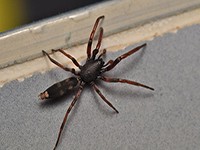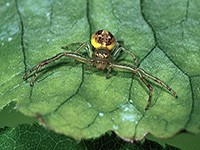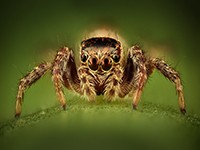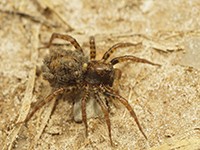There will always be spiders in your home, however, during the cooler months, you are more likely to see other species moving in that are typically found outdoors. Most spiders in New Zealand cannot harm humans but there are a few that we must watch out for which include the Katipo (native to New Zealand), Redback, and the White-tailed Spider. Out of these, you are most likely to see the White-tailed spider, as this is one of the spiders that can often move into buildings when it gets cold. (For more information in-depth information about White-tailed spiders, see our other creative hub post here)
The spiders that decide to come indoors when the weather starts to get cooler are generally hunting spiders as opposed to web-spinning spiders. These spiders come inside for a few reasons; to mate, to keep warm, and more commonly to find food. The spiders that you are most likely to see moving in when autumn arrives are; White-tailed spiders, Crab spiders, Jumping spiders, and Wolf spiders.

White-Tailed Spider |

Crab Spider |

Jumping Spider |

Wolf Spider |
White-tailed Spiders
White-tailed spiders were introduced to New Zealand from Australia and have been here for over 100 years. They feed on other spiders and as autumn arrives, and insect and spider numbers reduce outdoors they follow the food and potential mates indoors. It can be easy to spot the difference between females and males, as the females are generally larger, with a body length of up to 1.8cm. The males are smaller and only grow to around 1.2cm in length. When it comes to finding these spiders in your home, you can often find them in the least preferred places like your bedroom, linens, shoes, and clothing. This is because these places replicate the habitat they are used to outside, as well as being warm.
A common myth about White-tailed spiders is that their venom toxicity is due to the species of spiders they have been feeding on. This is completely untrue; their venom does not change!
Crab Spiders
These spiders are found all over New Zealand. We have about 11 different species with only two species arriving from Australia within the last 80 years. Crab spiders get their name from the way that they move sideways just like a crab. When it comes to catching their prey, they do not build webs but instead stalk and ambush their meal. Their diet mainly consists of insects found in your garden, although they do eat other spiders and pollinators such as bees. Crab spiders may move inside when food starts to get scarce outside, as your home has a relative abundance of food for them compared to outside.
Jumping Spiders
There are over 150 different species of Jumping spiders in New Zealand and these spider species can be found all over the world. Jumping spiders can be found in a wide range of habitats all over New Zealand, and most certainly in your backyard. They are rather small, with most of them having a body that is less than one centimetre long. As their name suggests, they do a lot of jumping and quite literally jump onto their prey. Another unique fact about these spiders is that, unlike other spiders, they have great eyesight. The two large central eyes help to identify its prey, with the other eyes it can sense movement almost all around itself. Although Jumping spiders do not often come inside on their own, they can be carried in on packages, plants, or people. If they are inside, you would be able to find them in bookcases, cracks in the floors, behind windows and doors as well as under furniture.
Wolf Spiders
Wolf spiders are found throughout all of New Zealand, and we have 27 different species of Wolf spiders. Two of these species appear to have been introduced, one from Australia and the other typically found in the South Pacific. Like white-tailed spiders, Wolf spiders roam around to hunt and eat insects and other invertebrates. Depending on the species of Wolf spider they have a few different techniques to catch their prey, but they will typically pounce and grab onto it quickly. Like other hunting spiders, when the weather starts to cool down and their food sources dwindle, they seek out our homes as we still have plenty of insects present. Once a Wolf spider is inside it will generally hide out in cracks and crevices, around house plants, in closets, or by doors and windows.
What can you do to stop spiders from getting into your home?
As the weather cools, we will be bringing in our outdoor furniture and some of our potted plants. It pays to check these for spiders, or their egg sacks before you bring them indoors. When a spider lays her eggs, they will be in a silk sack that can contain on average about 100 eggs per sack.
It will be almost impossible to seal up all the cracks and gaps that insects and especially spiders can squeeze through. However, if you can fill in some of these you will minimize the number of spiders that find their way into your home. Another tip to make your home less appealing for spiders is to reduce your clutter, as the more things you have laying around the easier it is for them to create their homes.
Reducing foliage that contacts the sides of our houses also helps reduce the number of spiders that find their way inside. Spiders use plants that contact the sides of our houses as a ‘bridge’ for easy access onto the building.
The best thing you can do to make your home unattractive is to reduce the food sources that spiders go inside looking for such as other spiders or insects. You can do this with our Spider and Insect Spray.
Our Spider and Insect Spray is designed as a broad-spectrum and general-purpose spray that controls any insect and spider problem in and around buildings. It will last between 4-6 months when properly applied and depending on the environment. For treating different types of insects or spiders be sure that you read the directions as they can differ depending on what insect you are trying to prevent from entering your home and feel free to contact us for any advice.